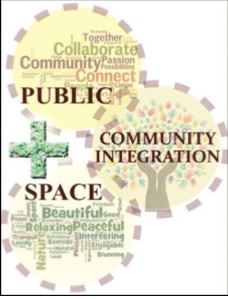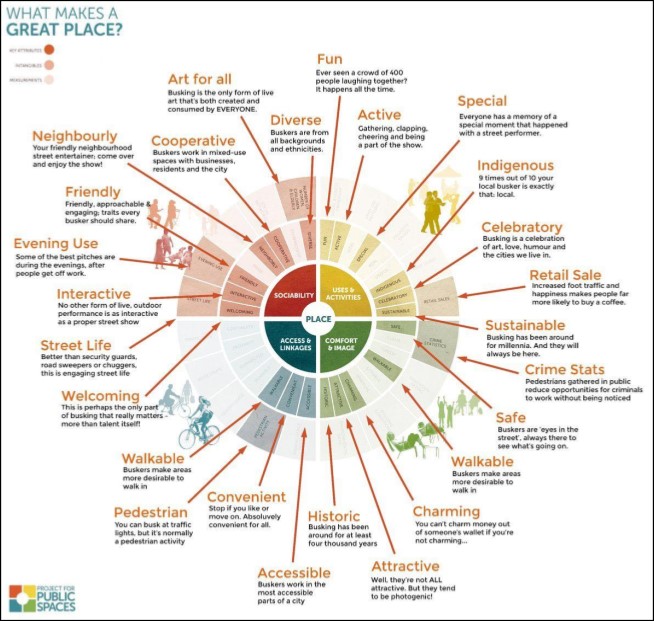Urban Public Spaces leave a very strong impression on our minds as these mere experiences continue to remain with us as memories. People not only spend time at these places, but also make memories by meeting, communicating, celebrating goodness and enjoying being together. Different places cater to different purposes and possess various characteristics/aural feelings because of which our mood changes, hence we behave accordingly. Urban Spaces are breathable places within a city’s urban-fabric. These are knowledge sharing platforms for social-interaction which are commutable, open to all regardless of any caste, culture, age-groups or gender-bias. Modern era consists of exclusionary planned spaces in comparison to contemporary ones as they had the tendency of promoting inclusive and equitable environment by their nature itself.

Today, an expanded private realm diminished the ideal quality of the public realm to such an extent, which has ceased the growth of cities in a positive manner. Significantly, the involvement  of large-scale business interests has resulted in privatization of these spaces, considering and visualizing their identity based primarily on aesthetics. Therefore, the key components necessary to define the inclusiveness of a true urban space are profitably ignored by the majority of authorities. This initially leads to social exclusion, gentrification and less exposure of people as a part of their community to access the space and finally because of their absence in decision-making, civic functions, process of resurgence or managing their neighbourhood spaces along with their unfulfilled needs. Instead of classifying deprived people as marginalized, a holistic approach of incorporating community participation and strong communication would play a vital role in resolving the issues faced by planners, architects, place making agents, urban practitioners and policy-makers by providing suitable sustainable solutions for universal design and development of any city or region.
of large-scale business interests has resulted in privatization of these spaces, considering and visualizing their identity based primarily on aesthetics. Therefore, the key components necessary to define the inclusiveness of a true urban space are profitably ignored by the majority of authorities. This initially leads to social exclusion, gentrification and less exposure of people as a part of their community to access the space and finally because of their absence in decision-making, civic functions, process of resurgence or managing their neighbourhood spaces along with their unfulfilled needs. Instead of classifying deprived people as marginalized, a holistic approach of incorporating community participation and strong communication would play a vital role in resolving the issues faced by planners, architects, place making agents, urban practitioners and policy-makers by providing suitable sustainable solutions for universal design and development of any city or region.
Cities are dynamic in nature and it remains under the process of development or rejuvenation until the vision set is achieved. Urban areas weaved within the city’s fabric are the outcomes of its evolution over the years. These areas tell the story of the city’s progression or regression during the present scenario. The knowledge of Architecture acquired had acted as a bridge towards my interest and broadened my scale of understanding in other fields. I have worked upon the projects targeting urban issues in urban design-studio and also done documentation work for dissertation writing. The number of aspects studied which enabled me to bring analysis were; Community Integrated Public Spaces, Slum Redevelopment through planning (considering the resident’s needs/requirements to be fulfilled), on-site interaction with them discussing problems, their diverse culture, pattern of living/work and finally came with the solutions. Thus, there is immense scope in the discipline of “Urban and Regional Planning” as a profession where budding planners seek many opportunities to research, learn and work on sensitive issues and challenges in modern cities and regions which are untouched or are under the process of evaluation to integrate diverse communities, developing framework for their future guided development, understanding the character and growth pattern of these areas at different levels from neighbourhood (local context) to city or region (larger context). This enables citizens to realize their role in the participatory process of planning and also benefit the concerned authorities to tackle the urban issues more precisely in collaboration with the community to plan the areas more efficiently and enhance the liveability standards as per the needs.

Interestingly, this public and private partnership approach, which is being discussed and adopted more recently in today’s city planning process is a new paradigm shift which would act as a guiding principle in formulating strategies for management of urban spaces which connect the citizens as a bridge with their surroundings and justifies the concept of live, work and play.
